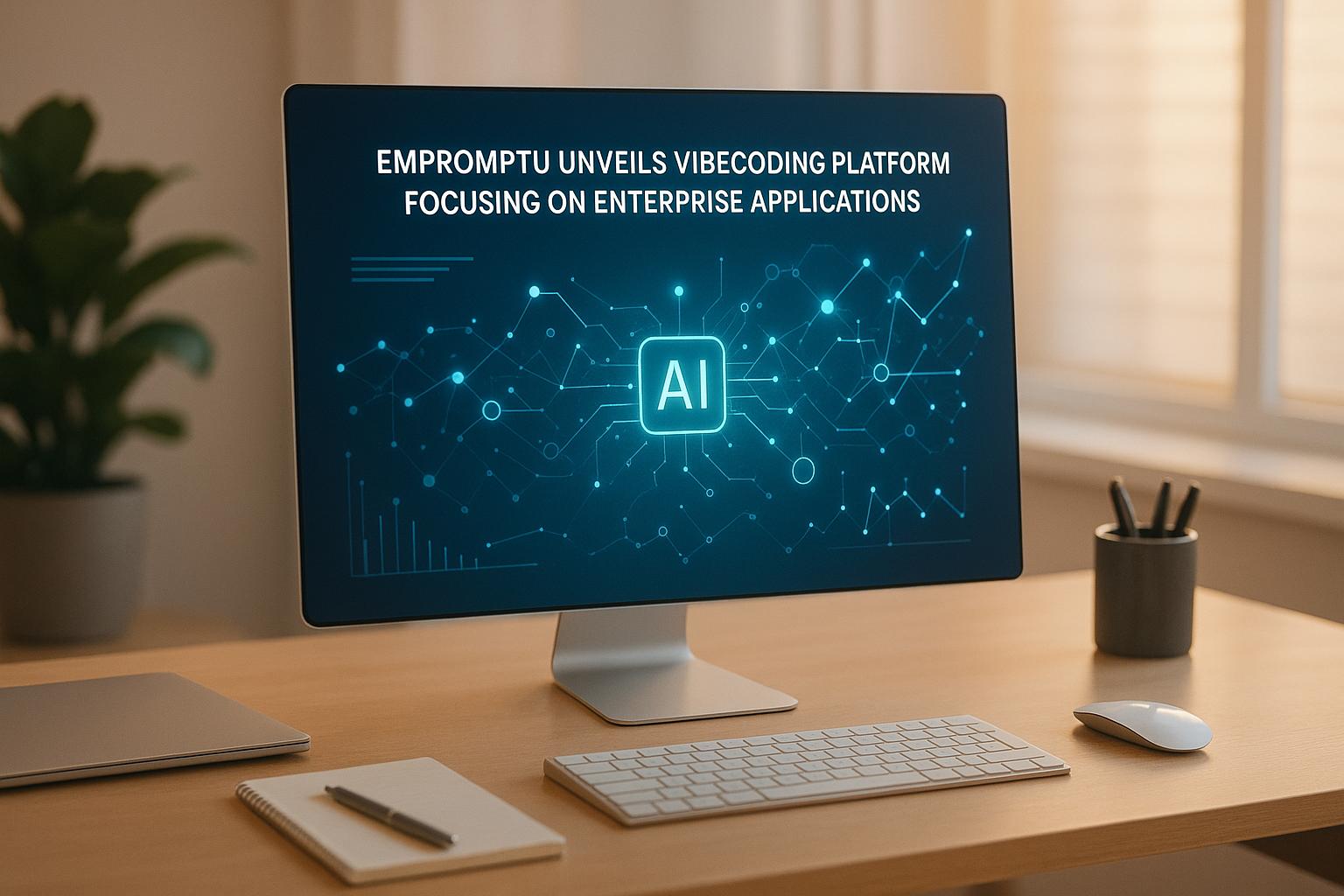Empromptu has officially launched its artificial intelligence (AI) coding platform, enabling the rapid creation of scalable, enterprise-class applications. The platform, designed from scratch, leverages proprietary AI response optimisation frameworks and backend services to cater to the needs of modern developers.
According to Shanea Leven, CEO of Empromptu, the platform stands apart from existing vibecoding tools. Unlike other so-called vibecoding platforms that provide a wrapper around a foundational AI model, the Empromptu platform is designed from the ground up to enable application developers to build enterprise applications that are designed to scale using a set of proprietary AI response optimization frameworks and backend services
, Leven stated.
A Robust Framework for Developers
Empromptu’s offering features retrieval-augmented generation (RAG) and large language model operations (LLMOps) tools. These capabilities provide DevOps teams with a comprehensive AI stack, which includes a context engineering framework designed to streamline the optimisation of tasks and workflows. Additional features include access to quality scores, AI output controls, and explainability, ensuring transparency in the decision-making process during application development.
The platform is also SOC-2 compliant and offers integrations with payment systems and other business applications, making it suitable for enterprise-level deployment. Leven emphasised the precision of the platform, stating that it delivers an impressive 98% accuracy rate compared to the 60-70% accuracy commonly achieved by other vibecoding tools.
Transparent Pricing Model
Another significant feature of the Empromptu platform is its pricing structure. Instead of adopting a token-based model, which can result in unexpected costs during the development process, the platform provides a predictable credit-based pricing system. This approach ensures affordability and eliminates surprises as developers iterate their applications.
The overall goal is not just to use a natural language interface to rapidly craft a prototype of an application but rather to build a robust application affordably that can then be deployed in any production environment, including container platforms, without requiring a lot of AI expertise
, Leven explained.
Addressing Industry Challenges
The adoption of vibecoding tools as an alternative to traditional low-code and no-code platforms could represent a significant shift in the application development landscape. While legacy tools have enabled faster development, they often fall short when scaling applications without additional coding in lower-level languages like Java. Empromptu aims to resolve such limitations by addressing scalability challenges during the initial development phase.
There is now a clear need for frameworks and platforms that make it possible to achieve that goal using vibecoding tools that can be easily embraced by both professional and so-called citizen developers alike
, Leven added.
Future Outlook
Although the pace of adoption for vibecoding platforms remains uncertain, their potential impact is undeniable. The number of applications developed and deployed in the coming years could far exceed the output of the previous decade. However, with this surge comes the challenge of deployment and maintenance in production environments, underscoring the importance of robust platforms like Empromptu’s.
As the demand for efficient development pipelines increases, tools such as the Empromptu platform could play a crucial role in supporting the growing number and diversity of developers entering the field. For now, Empromptu’s Vibecoding platform positions itself as a forward-thinking solution for enterprise application development, promising scalability, accuracy, and ease of use.
